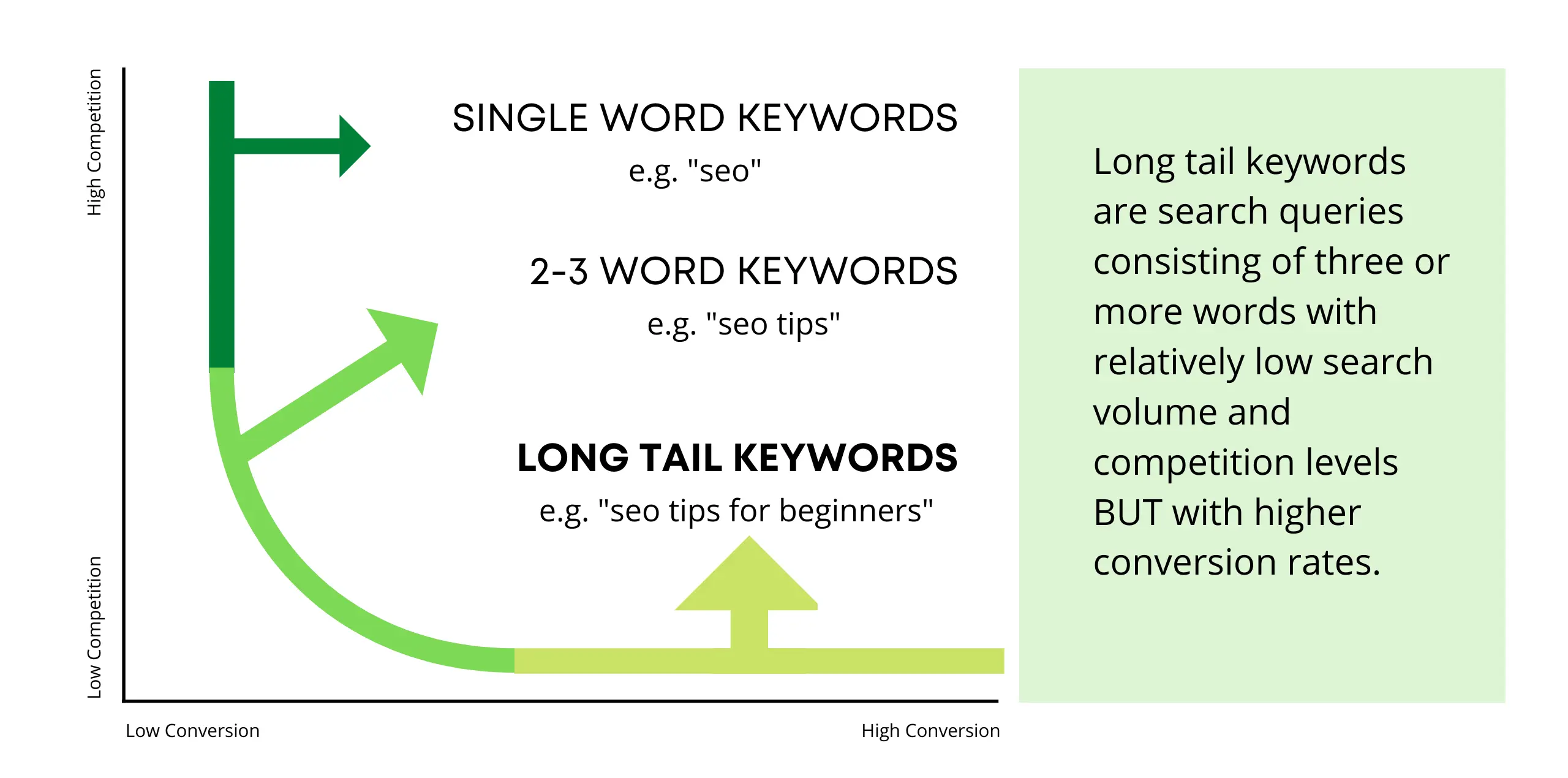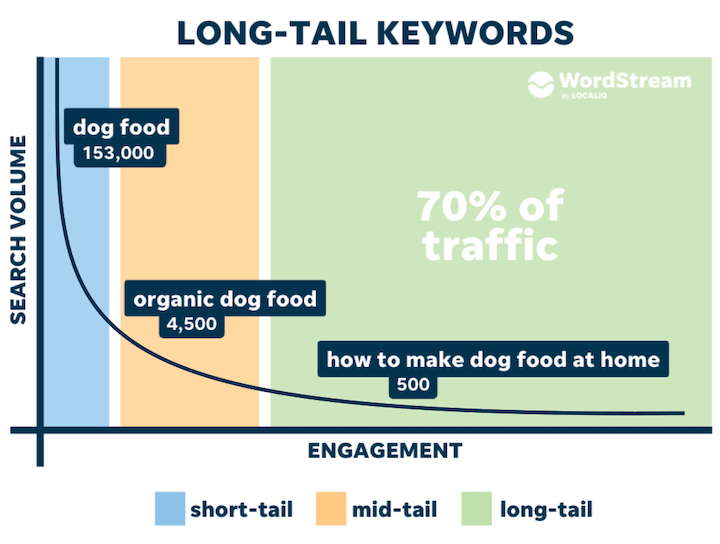Imagine a world where your car dealership website consistently ranks at the top of search engine results, attracting an influx of eager car buyers. Sounds enticing, doesn’t it? Well, the secret lies in harnessing the power of long-tail keywords for your car dealer SEO. In this article, we will explore how these specific, targeted keywords can propel your website to new heights, helping you stand out in a saturated market and reach the right audience. Get ready to boost your online presence and drive more qualified leads to your dealership with the strategic implementation of long-tail keywords.

This image is property of www.reliablesoft.net.
Need Automotive SEO – Start Here
Why Use Long-Tail Keywords in Car Dealer SEO?
Higher Conversion Rates
When it comes to car dealer SEO, using long-tail keywords can significantly improve your conversion rates. Long-tail keywords are more specific and targeted, which means that the people who search for them are often further along in the buying process and are more likely to convert into customers. By optimizing your website and content with long-tail keywords, you can attract highly qualified leads who are actively looking for the exact products or services you offer. This increases the chances of converting them into loyal customers.
Lower Competition
Another advantage of using long-tail keywords in car dealer SEO is that they typically have lower competition compared to generic or broad keywords. While generic keywords may have higher search volumes, they are often more competitive, making it more challenging to rank well in search engine results. Long-tail keywords, on the other hand, have lower search volumes but are more specific and targeted. This means that the competition for these keywords is usually lower, giving you a better chance of ranking higher in search results and attracting potential customers who are actively looking for what you offer.
Better Targeting
Long-tail keywords allow you to target a specific audience more effectively. When someone uses a long-tail keyword during their search, it indicates that they are looking for something very specific. By optimizing your website and content with relevant long-tail keywords, you can ensure that your business appears in front of the right audience at the right time. This improves your targeting capabilities, as you can tailor your content and offerings to match the specific needs and preferences of your target audience. As a result, you can attract highly qualified leads that are more likely to engage with your website and convert into customers.
Understanding Long-Tail Keywords
Definition of Long-Tail Keywords
Long-tail keywords are longer, more specific keyword phrases that are typically used by search engine users when they are looking for something specific. Unlike generic keywords that are short and broad, long-tail keywords are highly targeted and specific to a particular niche or topic. For car dealers, long-tail keywords may include phrases like “used luxury cars for sale in [location],” “affordable SUVs for families,” or “best car financing options for bad credit.” These longer and more specific phrases help searchers find the exact products or services they are seeking, making them valuable for car dealer SEO.
Examples of Long-Tail Keywords for Car Dealers
- “Certified pre-owned sedans with low mileage in [location]”
- “Family-friendly SUVs with third-row seating”
- “Best deals on electric cars in [location]”
- “Car lease options for college students”
- “Luxury car service and maintenance in [location]”

This image is property of mangools.com.
Need Automotive SEO – Start Here
Importance of Long-Tail Keywords for Car Dealers
Increasing Website Traffic
Using long-tail keywords in your car dealer SEO strategy can help increase website traffic. While these keywords may have lower search volumes compared to generic keywords, they attract more relevant and targeted traffic. This means that the people who visit your website through long-tail keyword searches are more likely to be interested in your offerings, resulting in higher engagement and conversion rates. By incorporating a variety of long-tail keywords into your website and content, you can attract a steady stream of qualified traffic and increase your chances of generating leads and sales.
Improving Search Engine Ranking
Long-tail keywords can also improve your search engine ranking and visibility. When you optimize your website and content with highly relevant long-tail keywords, search engines like Google will recognize the relevance of your website to those specific search queries. With lower competition for long-tail keywords, it becomes easier to rank higher in search engine results. This means that potential customers searching for specific car models, features, or services can easily find your website. By consistently utilizing long-tail keywords in your SEO strategy, you can improve your website’s visibility and attract more organic traffic.
Promoting Relevant Content
Long-tail keywords can help you create and promote highly relevant content for your target audience. By identifying and incorporating long-tail keywords into your content, you can ensure that your website provides valuable and specific information that aligns with the search intent of your potential customers. This not only improves the user experience but also establishes your website as a reliable source of information. By crafting content that matches the needs and preferences of your target audience, you can establish your expertise in the industry, build trust with your visitors, and increase the chances of them converting into customers.
Researching Long-Tail Keywords for Car Dealer SEO
Analyzing Customer Search Queries
To effectively incorporate long-tail keywords into your car dealer SEO strategy, it’s crucial to understand the search queries that potential customers use when looking for products or services similar to yours. Start by analyzing customer search queries in tools like Google Analytics or Google Search Console to gain insights into the specific phrases people use when searching for car-related information. Look for patterns and common themes among these queries, and identify any long-tail keywords that align with your offerings.
Using Keyword Research Tools
Keyword research tools can be a valuable resource when researching long-tail keywords for car dealer SEO. Tools like Google Keyword Planner, SEMrush, or Moz’s Keyword Explorer can help you discover relevant long-tail keywords that have decent search volumes and lower competition. These tools provide data on search volumes, keyword difficulty, and related keywords, allowing you to make informed decisions when selecting long-tail keywords to target.
Competitor Analysis
Analyzing your competitors’ websites and content can also provide insights into effective long-tail keywords for car dealer SEO. Identify your competitors in the industry and examine the keywords they are targeting in their website content, meta tags, and product descriptions. Look for opportunities to differentiate yourself by targeting long-tail keywords that are relevant but not heavily targeted by your competition. This can help you gain a competitive edge and attract potential customers who are searching for specific offerings.

This image is property of raventools.com.
Optimizing Website and Content with Long-Tail Keywords
On-Page SEO Optimization
Optimizing your website’s on-page elements is crucial for effectively using long-tail keywords. Ensure that your long-tail keywords are incorporated naturally into your page titles, headings, meta tags, and throughout your content. Balancing keyword usage with high-quality, informative, and engaging content is key to maintaining a positive user experience and satisfying search engine algorithms.
Creating High-Quality Content
High-quality content is essential for both user experience and search engine optimization. When creating content for your car dealer website, focus on providing valuable and relevant information that resonates with your target audience. Incorporate long-tail keywords strategically and organically throughout your content, and ensure that it answers the questions and addresses the needs of your potential customers. By creating content that educates, informs, and engages, you can attract and retain a loyal audience and increase your chances of converting them into customers.
Using Long-Tail Keywords in Meta Tags and Descriptions
Meta tags and descriptions play a crucial role in attracting clicks from search engine users. Incorporating long-tail keywords into your meta tags and descriptions can help increase the visibility and attractiveness of your website in search engine results. Ensure that your meta tags accurately describe the content of your page and include relevant long-tail keywords in a natural and compelling way. This increases the chances of your website being clicked on by users who are looking for the specific information or offerings you provide.
Creating Long-Tail Keyword-Focused Content
Blog Posts and Articles
Creating blog posts and articles that focus on long-tail keywords is a great way to attract organic traffic and engage with your target audience. Identify long-tail keywords that are relevant to specific aspects of your car dealership, such as car financing options, car maintenance tips, or car comparisons. Develop high-quality and informative blog posts or articles around these keywords, providing valuable insights and useful information for readers. By consistently publishing long-tail keyword-focused content, you can establish your website as a go-to resource for car-related topics, driving more traffic and potential customers to your website.
Product Descriptions
When selling cars or car-related products, optimizing your product descriptions with relevant long-tail keywords is crucial. Incorporate long-tail keywords that describe the specific features, specifications, or benefits of each product. By using descriptive and targeted keywords, potential customers who are searching for those specific products are more likely to find your website. Additionally, well-optimized product descriptions can improve your website’s visibility in search engine results, helping you attract qualified leads who are interested in purchasing the products you offer.
Frequently Asked Questions
Incorporating long-tail keywords into your frequently asked questions (FAQ) page can help address specific queries and concerns your potential customers may have. Identify common questions related to your car dealership and optimize your answers with relevant long-tail keywords. This ensures that your FAQ page appears in search results when potential customers are searching for answers to those specific questions. Providing comprehensive and well-optimized answers to common queries can instill trust in your brand and increase the chances of visitors converting into customers.

This image is property of www.wordstream.com.
Structuring URLs with Long-Tail Keywords
Including Keywords in URL Structure
When creating URLs for your car dealer website, including relevant long-tail keywords can improve your website’s search engine optimization. Ensure that your URLs accurately describe the content of the page and include the targeted long-tail keyword. For example, instead of using a generic URL like “www.exampledealership.com/products/12345,” use a more specific URL like “www.exampledealership.com/used-luxury-cars-for-sale-in-location.” This helps search engines understand the relevance of your page to specific search queries and improves your chances of ranking higher in search results.
Using Hyphens or Underscores
When structuring URLs with long-tail keywords, it is recommended to use hyphens to separate words rather than underscores. Hyphens are more search engine-friendly and help search engines interpret the individual words in the URL. For example, use “www.exampledealership.com/best-used-cars” instead of “www.exampledealership.com/best_used_cars.” By using hyphens, you enhance the readability and SEO-friendliness of your URLs, making it easier for search engines and users to understand the context and relevance of your content.
Avoiding Overly Long URLs
While it’s essential to include relevant long-tail keywords in your URLs, it’s crucial to avoid creating overly long URLs. Lengthy URLs can be difficult to read, understand, and share. Search engines also have character limits for displaying URLs in search results, so shorter, concise URLs are more effective. Aim for a balance between including relevant long-tail keywords and maintaining a user-friendly, visually pleasing URL structure to ensure the best results for your car dealer SEO efforts.
Utilizing Long-Tail Keywords in Meta Tags and Descriptions
Title Tags
Title tags are one of the most important on-page SEO elements. Optimizing your title tags with relevant long-tail keywords can improve your website’s visibility and attractiveness in search engine results. Ensure that your title tags accurately describe the content of the page and include long-tail keywords that align with the search intent of your potential customers. Keep the title tags concise, compelling, and within the character limit to effectively capture the attention of search engine users.
Meta Descriptions
Meta descriptions provide a brief summary of the page’s content and play a crucial role in determining user click-through rates from search engine results. Incorporate relevant long-tail keywords naturally into your meta descriptions to make them more enticing and relevant to search engine users. By providing a compelling and informative meta description that aligns with the search intent of potential customers, you can increase the chances of attracting clicks to your website.
Header Tags (H1, H2, H3, etc.)
Incorporating long-tail keywords into your header tags (H1, H2, H3, etc.) can improve the structure and organization of your web pages while optimizing them for search engines. Use header tags to break up your content and highlight important sections. Include relevant long-tail keywords in your header tags to signal the relevance and context of the content to both search engines and users. This improves the overall user experience and helps search engines understand the main topics or themes covered in your content.

This image is property of s3-us-west-2.amazonaws.com.
Monitoring and Analyzing the Performance of Long-Tail Keywords
Tracking Keyword Rankings
Regularly monitor and track the rankings of your long-tail keywords to assess the effectiveness of your car dealer SEO strategy. Use tools like Google Search Console, SEMrush, or Moz to keep track of your keyword rankings over time. By monitoring your keyword rankings, you can identify any changes or fluctuations and make necessary adjustments to your SEO strategy to maintain or improve your search engine visibility.
Analyzing Website Traffic and Conversion Rates
Website traffic and conversion rates are key performance indicators for your car dealer SEO efforts. Analyze your website traffic and conversion rates to gauge the effectiveness of your long-tail keyword optimization. Track the number of visitors coming to your website through long-tail keyword searches, as well as the number of conversions generated from those visitors. This data can help you understand the impact of your long-tail keyword strategy and identify areas for improvement.
Improving Performance with A/B Testing
A/B testing allows you to experiment with different variations of your long-tail keywords, content, or website elements to determine the optimal combination for driving traffic and conversions. Test different long-tail keyword variations, meta tags, content structures, or calls-to-action on specific pages. By analyzing the performance of each variation, you can make data-driven decisions to improve the performance of your car dealer SEO efforts.
Tips for Effective Long-Tail Keyword Implementation
Focus on User Intent
When selecting and implementing long-tail keywords, it’s crucial to consider the intent behind the search queries. Put yourself in the shoes of your potential customers and think about what they are looking for when they use specific long-tail keywords. By providing relevant and valuable content that aligns with the user’s intent, you can increase the chances of attracting and converting them into customers.
Experiment with Different Variations
Don’t be afraid to experiment with different variations of long-tail keywords to find the most effective ones for your car dealer SEO strategy. Test variations of long-tail keywords, including synonyms or related terms, to expand your reach and attract a wider audience. Monitor the performance of each variation and adjust your strategy accordingly to maximize your ROI.
Monitor and Adapt Strategies
As search trends and user preferences evolve, it’s essential to continuously monitor and adapt your long-tail keyword strategies. Stay up to date with industry trends, changes in search algorithms, and customer preferences to ensure that your long-tail keywords remain relevant and effective. Regularly analyze and make adjustments to your long-tail keyword strategy to stay ahead of the competition and maximize your chances of success in the car dealer SEO landscape.
In conclusion, incorporating long-tail keywords into your car dealer SEO strategy can yield numerous benefits, including higher conversion rates, lower competition, and better targeting. By understanding the definition and examples of long-tail keywords, as well as their importance in increasing website traffic, improving search engine ranking, and promoting relevant content, you can effectively research and optimize your website and content with long-tail keywords. By structuring URLs, utilizing long-tail keywords in meta tags and descriptions, and creating long-tail keyword-focused content, you can enhance your search engine visibility and attract a targeted audience. Monitoring and analyzing the performance of long-tail keywords, along with implementing effective tips and strategies, will further enhance your success in the highly competitive car dealer SEO landscape.


